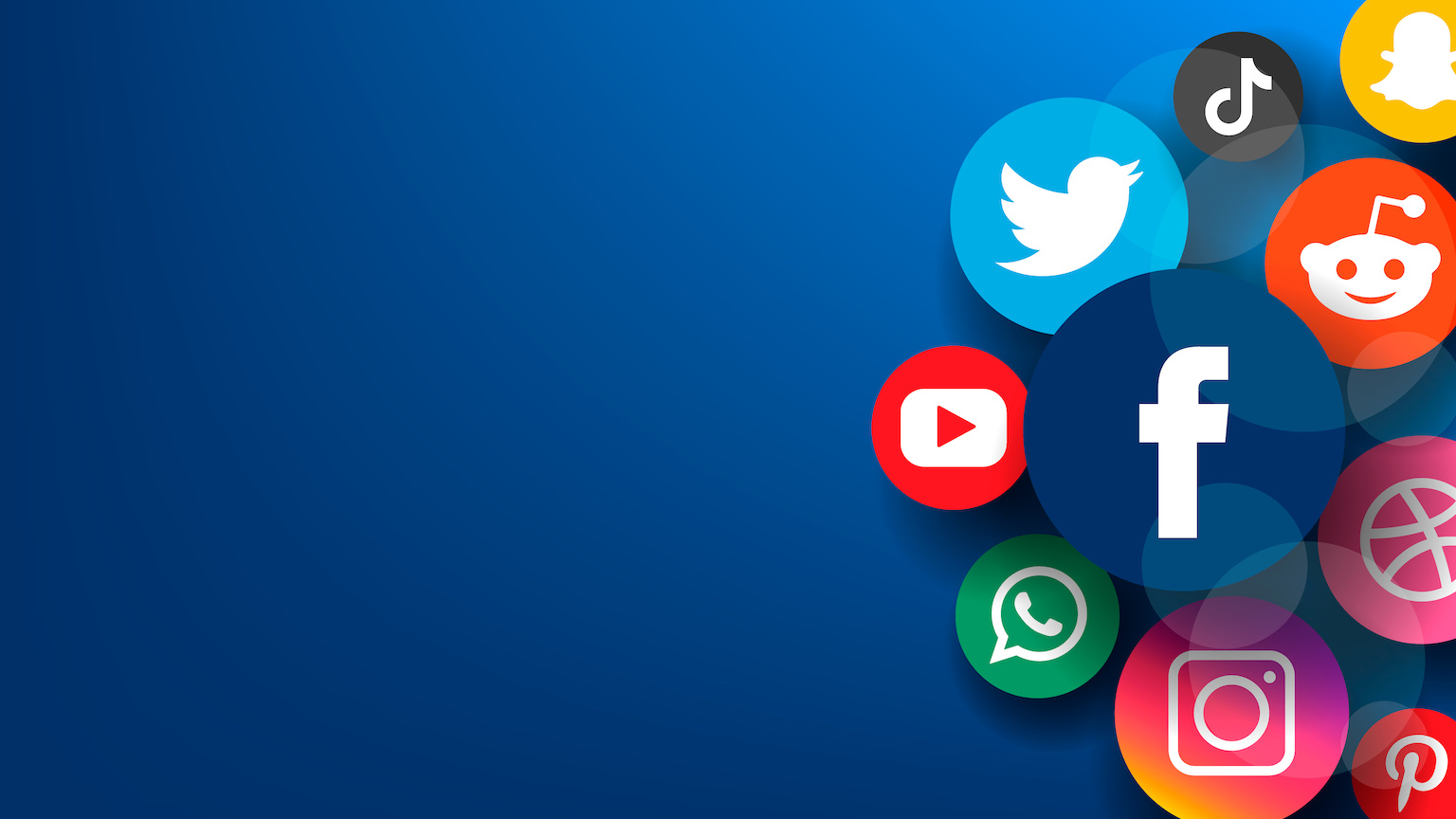How the internet changed news, according to The Onion

When amateur writers pitch headlines to The Onion, their jokes often flop. One reason may surprise you: They use too many funny words that wink at the reader, “wacky” elements that sabotage any chance at good parody, former Onion editor Joe Randazzo told our sister site Big Think in 2012.
“It’s counterintuitive, but it’s that dry tone and that straight tone of the newspaper article — of the kind of AP style of writing, or New York Times style of writing — is what we strive to achieve,” Randazzo said. “Sometimes just deleting an extra little funny word makes the joke that much better because it’s really emulating that style.”
Parody requires verisimilitude: the act of mirroring the style, tone, and conventions of your target as closely as possible — “down to every syllable and punctuation mark,” Scott Dikkers, a cofounding editor of The Onion, explains in his book How To Write Funny.
But The Onion has had to mirror a moving target. As news moved from print to digital since The Onion’s founding in 1988, the paper has had to keep pace — copying and, in some cases, innovating on the same strategies media outlets have used to survive.
From print to digital
The Onion published its first issue in 1988, with the A1 headline “Mendota Monster Mauls Madison.” In those early years, the paper was free and its jokes were “sillier” and “more random” than later headlines, often referencing local stories only people in the paper’s hometown of Madison, Wisconsin, would understand, former Onion writer Carol Kolb told Mike Sacks in Poking a Dead Frog.

In the late 1980s, news media was already suffering an identity crisis, Dikkers says. “Newspapers had a hard time competing with new media like television, specifically cable,” he tells Freethink, noting how the 1987 repeal of the Fairness Doctrine eliminated the requirement for broadcast networks to cover contrasting views on issues deemed to be publicly important. “So [newspapers] had to jazz things up, focusing more and more on sensationalism.”
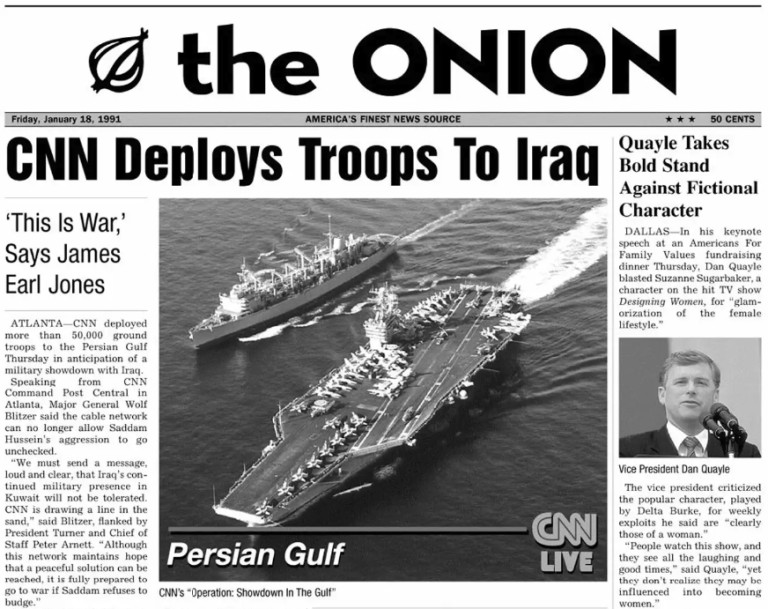
In the 1990s, The Onion gained popularity as it began parodying sensational national stories and cementing its voice as “America’s Finest News Source” — an absurdly authoritative and self-important arbiter of everything, delivered through a dry Associated Press writing style, with a Midwestern progressive-underdog ethos lying in the subtext.
Still, the paper remained an “underground secret” for years, as Kolb told Sacks, sold on the streets of a handful of Midwestern cities or nationally via subscription. In those days, Onion writers generally had day jobs, and most “never imagined being celebrated writers,” says Dikkers, editor-in-chief from 1988 to 1999.
The types of writers hired by The Onion would change after the paper’s headquarters moved from Wisconsin to New York City in 2001: “After the move, we found ambitious people who always knew they wanted to write comedy and actually expected to succeed at it,” Dikkers says. “But the voice and character of The Onion [were] pretty well-established by then. […] Writers come in now and write for that voice, just like they would write in the voice of a TV show if they got hired as a writer for a particular show.”
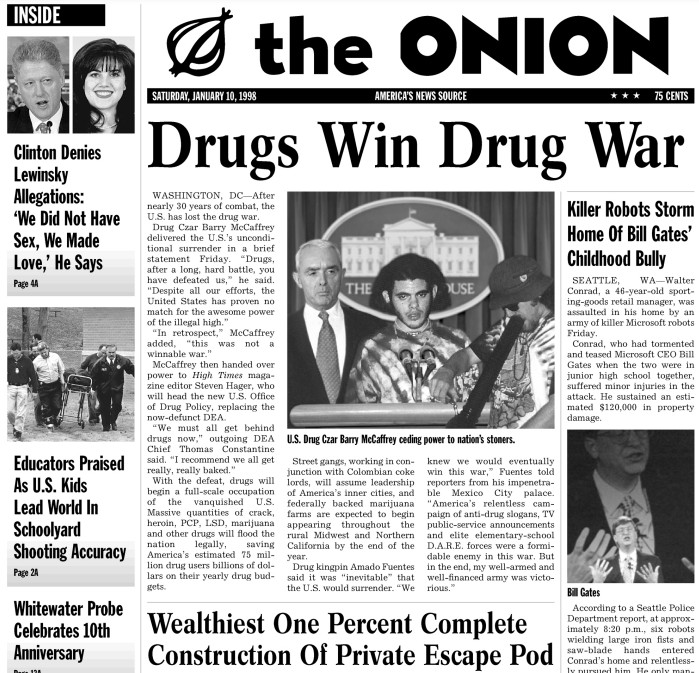
The Onion started putting its paper online in the summer of 1996, only months after The New York Times did so. The internet didn’t change The Onion’s editorial process — at least at first. “We simply took the physical newspaper and put it on the computer, uploading all of our stories once per week, just like we published the print version,” Dikkers says. “A few years later we thought that, instead of dumping everything at the same time, it would be better to roll out stories gradually. That way, traffic would be more consistent.”
By 2007, The Onion was generating more than half of its revenue from its online operations.
“As The Onion was really becoming popular in the late 90s and early 2000s, print media was dying,” Dikkers says. “Newsweek went under [ceasing its print publication in 2012]. Circulation was cut down. But The Onion’s circulation was growing, and I think a lot of media looked at us as an example of how to prevent further loss of readership. I started noticing more news of the weird, more entertainment and celebrity-focused stories, more infotainment, less hard news and international coverage, headlines that were more overtly amusing.”
The Onion had by then ventured into various mediums — books, comic books, TV pilots, radio shows, and a movie filmed in 2003. But online video was arguably the biggest new medium that The Onion and other digital media companies were investing in at the time.
In 2007, The Onion launched the Onion News Network (ONN), a parody of cable outlets like CNN and Fox News. Chad Nackers, The Onion’s current editor-in-chief, told Freethink that ONN ranks among his favorite defunct Onion products, saying the videos “perfectly captured the idiotic aspects of cable news.
“Digital first”
When The Onion switched from putting whole issues online at once to gradually releasing content throughout the week, it eventually changed their “two-week turnaround for stories into a one-day turnaround,” Dikker says.
It mirrored journalism’s broader switch to more and faster coverage, for better and for worse. By 2013, the year when The Onion sold its last physical copy, the paper had already moved to a “digital first” strategy, publishing about twice the content it had run the previous year. A 2013 Slate article argued that upping output had traded quality for quantity, at least slightly, noting that The Onion’s once extremely selective pitch meetings (where only a tiny handful of pitched jokes would make it through) had gone from weekly to daily.
Commenting on The Onion’s move to parody journalism in the digital age, former editor-in-chief Will Tracy told Slate: “If part of our mission is to accurately and comprehensively parody what a news organization does, then we needed to adapt by doing more timely stuff, by making our company feel more digital, by adapting to social media. If we do that, we actually look more like what we’re trying to parody.”
As national newspapers were increasingly going digital, local papers were steadily folding in the wake of declining readership, with print circulation falling by about 55% from 2015 to 2020.
The Onion’s local coverage didn’t suffer — the evergreen, slice-of-life “Area Man” headlines have long been some of its most beloved jokes, with headlines like “Deep Down, Area Man Knows He’s Not Done Vomiting,” “Area Woman Not A Morning, Afternoon, Or Night Person,” “Area Man Self-Conscious About All The Wrong Things,” and “Area Woman Not Good Enough Artist To Justify Eccentricities.” (There was even a book collection, 2010’s The Onion Presents Chronicles Of The Area Man.)

Do these jokes still work as parody given the collapse of local news?
“[They] are still very relevant, because they reveal the human condition and provide a glimpse into modern American life,” Nackers says. “Obviously, local coverage is from a bygone era of newspapers, but the mundane human behavior is still prevalent.”
You might think all the good evergreen jokes will get plucked sooner or later. “For headline construction, certain types of jokes disappear because they’ve been made, especially jokes that rely on a play on words,” Nackers says.
But while gems like “Fritolaysia Cuts Off Chiplomatic Relations With Snakistan” are now taken, Dikkers says there’s “an endless variety of jokes to be told. We’re not going to run out!”
Beyond mining for untapped parody headlines, there’s another way to open up new space for jokes: experiment with a new voice, in new formats. That’s what The Onion did in the age of peak BuzzFeed.
Clickhole
In 2014, The Onion launched ClickHole, a sister site that parodies what was once the loudest online publication, BuzzFeed. The quiz and slideshow-heavy website attracted millions of monthly readers with headlines that — according to Jewel Galbraith, current editor-in-chief of ClickHole — took advantage of powerful emotions like nostalgia (“25 Nostalgic Photos That Will Put Late-Era Millennials In Their Feelings”), outrage (“Hillary Clinton Aide Tells Reporter To ‘Fuck Off’ And ‘Have A Good Life’”) and morbid curiosity (“People Who Were Stuck In Comas Are Sharing What It Was Actually Like, And I Truly Have No Words”).
How does ClickHole warp the BuzzFeed voice?
“I like to think of it as the voice of a maniac who spends every waking hour online consuming content and social media,” Steve Etheridge, former editor-in-chief of ClickHole, tells Freethink. “They soak everything up and then try to make the same kinds of content, but it all comes out slightly deranged. It’s a simple yet positive voice that perceives the world through the lens of sensational internet emotions (“Inspiring!” “Body Positivity FTW!”) and then depicts it in a naive, misguided way.”

“ClickHole’s voice mirrors the chaos of the digital media industry and the internet at large,” says Stephen LaConte, a producer at ClickHole and a staff writer at BuzzFeed. “Feverish and frenzied, absurd, very excitable, often naive or stupid, desperate to turn anything into a story that will go viral. ClickHole knows that if people stop clicking, it dies, so the stakes are always extremely high. Which is true of the non-satirical digital media companies too.”
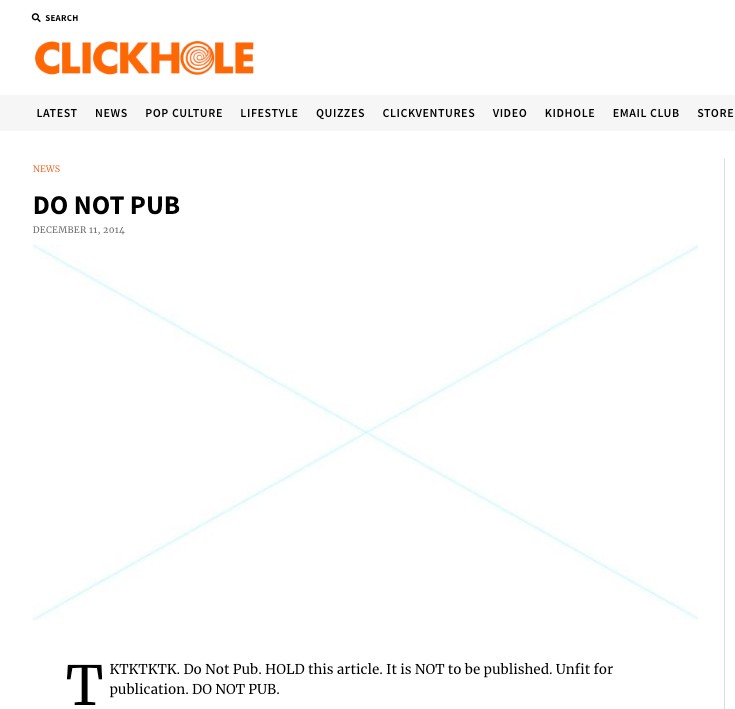
As BuzzFeed rose in popularity, other media outlets began using the same brand of click-inducing strategies. “Even The New York Times will sometimes publish the most ridiculous headline that only serves to draw you in without actually telling you what’s going on,” says Nackers.
Galbraith notes, “There are more lists and quizzes on news sites than there were before BuzzFeed. ‘Every State’s Favorite X’ is a common example of this kind of content. […] Traditional, inverted pyramid news articles simply aren’t as effective at attracting eyeballs.”
(In fact, The Onion’s mock-serious tone is more straight-laced than a lot of mainstream news today, Nackers suspects: “I would say that our tone is more factual and formal than most serious news publications nowadays, using soft leads and a clinical voice to lay out the facts before we move on to the absurd joke.”)
Before the internet, LaConte says, “the objective of a journalist was to use an authoritative voice without personality infused into it.” But BuzzFeed and its news division weren’t “afraid to have a little fun, and to approach news topics in a way that wasn’t just informative, but also interesting and enjoyable and personable.”
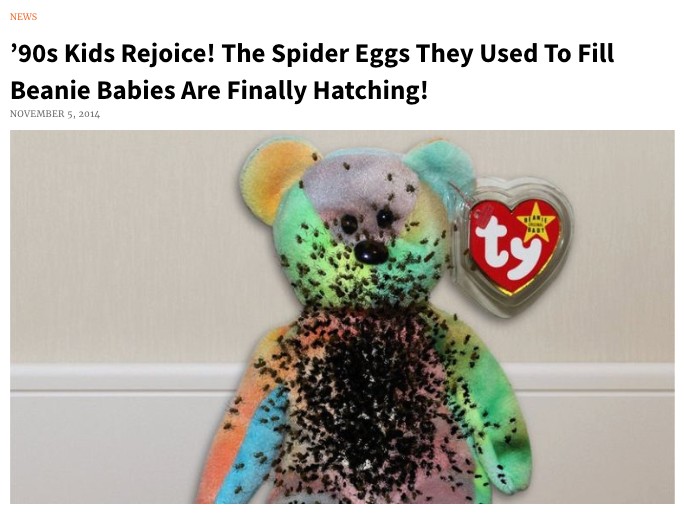
Still, BuzzFeed — which over the past year has shuttered BuzzFeed News and laid off 16% of its staff — only dominated a brief, specific era of the internet.
“When BuzzFeed started, the internet was a lot smaller,” LaConte says. “Everyone was seeing the same things. It was that very brief period of time when the internet was monocultural. Everyone would log onto Facebook and see these BuzzFeed lists and quizzes, giving them the same points of reference.”
“Today’s different. The internet is much larger. Everyone stays in their own little corner, visits their own websites, reads their own journalists. I don’t think it would ever be possible to have a phenomenon like BuzzFeed ever again because the internet is so siloed now. It was a time when everyone had the same internet experience.”
The loss of the monoculture is the hardest thing about joke-writing today, Nackers says. “We don’t have the same reference points anymore.”
But BuzzFeed didn’t flop because of culture. Its business strategy had long depended on referrals from Facebook, which for most of the 2010s had been the superhighway connecting readers to BuzzFeed and other outlets. Facebook continually tweaked its algorithm to discourage clickbait-type headlines, and in recent years, it has aggressively retreated from news altogether — a tectonic shift that’s cratered traffic and revenue for many digital media companies.
How is ClickHole dealing with the trends that have torpedoed so many of its parody targets?
“ClickHole’s business strategy definitely evolved on a similar trajectory as the industry at large,” Etheridge, former editor-in-chief, says. “Like most publishers, we went hard on the pivot to video for a couple of years, only to eventually back off once we realized it wasn’t the advertising goldmine it was hyped up to be.”
Social media opened up new formats for ClickHole jokes.
“We create some content specifically for our social pages, like our ‘They Said What?!’ celebrity quotes and various memes that we urge our followers to like and share,” LaConte says. Galbraith notes that ClickHole “tries to make headlines shorter for people’s attention spans and get to the punchline quickly — unless it’s a stylistic thing where the length and specificity is part of the joke and the appeal.”
But ClickHole isn’t catering all its humor to specific platforms. “A good joke is a good joke, and that’s our only standard,” LaConte says.
The Onion hot potato
As for The Onion? Under the ownership of G/O Media, which acquired The Onion in 2019, Nackers says “the focus was on driving pageviews, which lead to numerous slideshows that in themselves were a larger meta-critique on the failings of media and the race to the bottom.”
But in April, G/O Media sold The Onion to Global Tetrahedron, a new Chicago-based firm whose name is a reference to a fictional “multinational behemoth” featured in The Onion’s 1999 book Our Dumb Century.
“The vision,” The Onion’s new chief marketing officer Leila Claire Brillson told WIRED, “is to basically unshackle The Onion from this very traffic-driven strategy of pageviews and programmatic ad impressions.”
Like most digital media companies, it’s not exactly clear how or whether The Onion will survive financially over the long term. (Upon the recent sale, The Onion published the maybe-not-entirely-joking headline “Give Us $1 Or ‘The Onion’ Disappears Forever.”)
For now, Dikkers says he notices a difference in The Onion’s recent output.
“I can see The Onion is already running more stories and less clickbait, which is delightful to see. This is how it always was when I was there. I never had pressure to do traffic-driven stunts that weren’t fun or funny. So, they’re getting back those happy times, and I’m excited for them!”
Nackers says that no longer having to focus on publishing a “never-ending torrent of content” will allow writers to focus on longer stories and new editorial concepts, adding that The Onion is “planning to invest in a number of different audio and video formats to provide great coverage for lazy readers.”
Whatever those may be, some things about The Onion are unlikely to change. The “Area Man” will keep making local news with his sad-sack life. Unaware readers (and the occasional real-world dictatorship) will continue mistaking Onion stories for real news. And “America’s Finest News Source” won’t go on without its critics — not only on the right (it is a decidedly progressive publication, after all), but also on the left.
“If we make fun of Biden for something, people on the left get mad about it,” Nakkers says. “And that’s because of fear: They’re afraid we’re going to say something that will make people not vote for him. Our view, however, is that we should be able to be critical about things that aren’t great and attack that. We’re not telling you what to do. We’re just telling you to think.”
This article was originally published by our sister site, Freethink.




